Our 2013 Young Ambassadors, Sam and Millie, travelled to India to investigate the barriers to education there.
They visited Oxfam India projects in and around the capital city, Delhi, meeting slum communities, child campaigners and children missing out on school, and attending classes at a government school. Find out more about Sam and Millie, our Young Ambassadors for 2013.
Click here to download their full trip diary or read on for their daily trip blog.
Millie and Sam are also tweeting @milliesamYA.
Guardian journalist Rachel Williams travelled with Millie and Sam to India. Read her feature article here.
Day One
We spent our first day in Trilokpuri visiting the Josh project in an urban slum settlement.
Virtually all children we met said they were in classes of between 70 to 80 pupils at school, a real eye opener for both of us. We were stunned to hear this, as an English class size averages about 25-30 students.
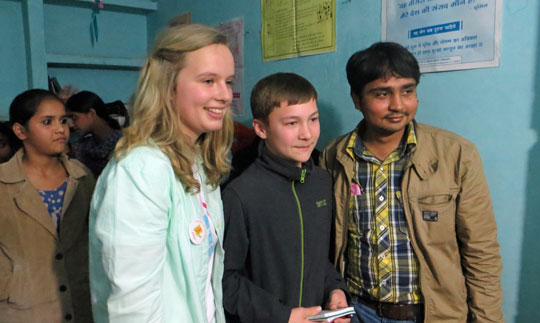 We also heard from the children that many teachers do not turn up to school, miss classes, use their phones in lessons and don’t pay enough attention to students. They also regretted a lack of interaction with teachers. We wondered why and whether teachers in these large classes could actually cope! We hope to find further information about this later in the week. We also heard teachers had to spend a long time on non-teaching activities.
We also heard from the children that many teachers do not turn up to school, miss classes, use their phones in lessons and don’t pay enough attention to students. They also regretted a lack of interaction with teachers. We wondered why and whether teachers in these large classes could actually cope! We hope to find further information about this later in the week. We also heard teachers had to spend a long time on non-teaching activities.
Our overall impression of Delhi was that this vibrant, noisy, colourful city is one of two extremes and reflects the ‘two Indias’. However everyone appears happy, perhaps happier than English students. Everywhere we were greeted with the warmest of welcomes with children laughing, singing and playing with us.
@sendmyfriend sometimes there can be 1 teacher teaching 2 classes. #youngambassadors #educationforall
— millie sam (@milliesamYA) February 18, 2013
Day Two
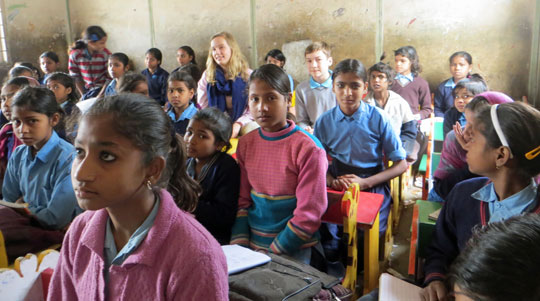 On our second day in New Delhi, India, we travelled to Mandanpur Khadar which is an surban resettlement colony on the outskirts of Delhi. The Oxfam partner working there is called EFRAH, meaning Empowerment for Rehabilitation, Academic and Health. This organisation was set up to help get children into school and deal with problems that they may have at school.
On our second day in New Delhi, India, we travelled to Mandanpur Khadar which is an surban resettlement colony on the outskirts of Delhi. The Oxfam partner working there is called EFRAH, meaning Empowerment for Rehabilitation, Academic and Health. This organisation was set up to help get children into school and deal with problems that they may have at school.
First of all we were taken into a primary school where we attended Maths and English lessons. Although Sam couldn’t understand what the students or teachers were saying he thought that it looked as if the teachers were doing the best possible job to engage the pupils and give fun and interesting lessons. The teaching standard that we observed was very different to what we were told about yesterday by the children at the JOSH project. This proves that there are two sides to the story and that India has committed teachers.
After this we met a group of girls our own age. The members had faced many difficulties at school. In addition boys and young men regularly harassed them on their journeys to and from school. Some of the girls we met told stories of having stones thrown at them and others told us about sexual harassment including boys and men calling out abusive language.
One of the girls that Millie met wouldn’t even tell her parents of the sexual harassment that she was experiencing as she was afraid that her parents would blame her and take her out of school. This really shows how vulnerable girls in India are to dropping out of school and how determined they are to complete a good education.
Today has fully opened our eyes to the reality of the education system in India and especially to the injustice that girls face on a daily basis by the simple action of going to school.
@sendmyfriend a girl took her toddler brother to school as her mum worked. How can you learn like this? #educationforall #youngambassadors
— millie sam (@milliesamYA) February 20, 2013
Day Three
This morning we travelled to a downtown office block and met Mr Ram Pal Singh (pictured above, centre), president of the All India Primary Teachers Federation (AIPTF) and Mr Rama Kant Rai, Convenor of India’s Global Campaign for Education Coalition (pictured above, far right).
This gave us the opportunity to find out more about teaching in India from the point of view of influential adults. We had formulated questions based on our discussions with children during the previous two days.
For instance we heard that some teachers had only 20 days training before being thrown in the deep end in front of a class! They are also obliged by law to take part in censuses of trees, animals and people, and in election counts. This partly explains some of the issues we saw the previous day at the primary school. We thought this lack of training and additional duties were appalling.
Short term contracts also meant children lacked continuity in teaching. The members of AIPTF said that the staff: student ratio should be 1:30 but the national average was 1:50 or higher. This leads to many problems for the teachers and the students they are teaching.
Our hosts then invited us to another Delhi Municipal Council school. It was hugely different to the school we had visited the previous morning and had much better facilities and more classrooms. This really showed us how unequal schools are even though they are within the same Delhi local government administration.
In the afternoon we met with the YP group. This is an organisation that uses peer educators between the ages of 18 and 21 to teach children from urban slum settlements. One of their projects teaches life skills to help increase children’s memory, concentration and health awareness.
We talked to two of the peer educators Niharika, 18 and Raghav, 18. They were both extremely passionate about helping to improve the children’s knowledge and life skills. They also said they were learning a lot themselves from the children. Our talk with these two passionate young adults was truly inspirational.
After meeting the peer educators we were taken to one community where the educators work and we were able to interact with the children. They lived in a barely noticeable slum just a few yards from one of Delhi’s main tourist attractions. We sat in the park and discussed the problems that the children face on a daily basis to get to school. One was that they had to walk for about 45 minutes as they couldn’t afford the school bus. There was no help to provide the children and the families with this money.
Today we have heard the other side of the teachers’ story and also saw that the YP project helps to get children into school by getting the correct documents filled in. Without the proper birth certificate and proof of address it is impossible to enrol at school. It has been very useful for adding to our fact file and has been a thoroughly interesting day.
@sendmyfriend we met a youth project which gets documents for children to go to school. Really good work. #educationforall #youngambassadors
— millie sam (@milliesamYA) February 20, 2013
Day Four
Today we revisited the community at Mandanpur Khadar and Oxfam’s partner EFRAH. We saw how the problems we had witnessed two days ago can start to be sorted out and fixed.
We were there to attend a public hearing which provided the public with a chance to state their individual grievances to officials. They were asked to say what actions will be taken by the local government to make improvements.
The community spoke about the bad infrastructure in schools, poor teaching and the sexual harassment that girls face on a daily basis while going to school. We were shocked to see how many people had come with complaints for the Delhi Committee for Protection of Children’s Rights.
We were invited to sit on the panel and be witnesses to the public hearing. Towards the end we were asked to give our own testimony about what we had seen in the local school. We explained that we had observed most of their grievances and that we completely agreed that changes are urgently needed so that every child receives a fair and equal chance for an education. The audience loudly applauded and at the end of the hearing we were presented with flowers. We felt extremely proud to have added our own voices to the testimony that the local people had presented.
We then met up with Anita from the Adolescent Girls Awareness Group. She been the first witness at the hearing and she raised many issues about the poor quality of the school infrastructure. We spoke to her afterwards and she showed us around her local community and pointed out her journey from home to school. As we were about to leave Anita gave us gifts that she had handcrafted herself. This was a very emotional moment. It was sad to leave Mandanpur Khadar as we had started to make some good friends there. When we said good bye it was with some sadness.
However we will write and e-mail to stay in touch with the community and work to build links between the projects in India that we have visited and the UK.
Day Five
Today we had the opportunity to take time out, do a little sightseeing and reflect on our experiences of the past week. We visited Red Fort, a grand red sandstone fort that demonstrates the power of the Mogul Empire. There were spacious grounds with beautiful buildings and many visiting tourists. We also filmed nearby in the beautiful Lodhi Gardens. It was like a secret retreat with sweeping lawns and old buildings of grand style and history. It felt far away from the slums of Trilokpuri and Madanpur Khadar.
This week has been both an eye opener and extraordinary. Both of us have learnt and gained so much knowledge and understanding. The extreme poverty was a shock to us and really shows that where you are born dictates the chances you have at life.
If the Indian government spends the targeted amount of GDP on schooling then the level of education would most definitely improve. All the country needs is the political will to drive forward better education for all.
“The people we have met have been so inspirational for us.”
As well as the government needing to allocate more money, it also needs to fairly distribute the money for all children. We observed two schools within the same local government programme but with vastly different standards. This is unfair. A similar observation applies across the world. Every child can receive a good education if the political will is there and the needs of the poorest are not overlooked.
We now more clearly understand the part that the younger generation can play in campaigning for the right to education. All the people we have met have been so inspirational for us. The young, articulate school students, such as those we met at Trilokpuri and at the YP Project, were passionate advocates for the education of others. Those in the slums were desperate to promote their own need for education and for the infrastructure that allows it. This was the key message of the public hearing, where the community stated their grievances about the poor quality of their schools and demanded action.
From this experience we firmly believe we both can campaign more effectively for education. We are armed with an amazing real life experience of both the barriers to education and the ways communities can take action to make the government stick to their promises. We look forward to linking up with young people in the UK and our new friends in India to help make education for all a reality.
We feel fortunate and privileged that we had the opportunity that few others get, actually meeting community members, visiting schools and meeting organisations that help to get more children into education. Thank you to the Global Campaign for Education UK, NUT, Oxfam India and Oxfam GB for giving us this once in a lifetime opportunity.
@sendmyfriend & @oxfameducation . There is a global lack of political will to get education for all #educationforall #youngambassadors
— millie sam (@milliesamYA) February 21, 2013


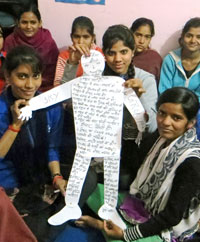
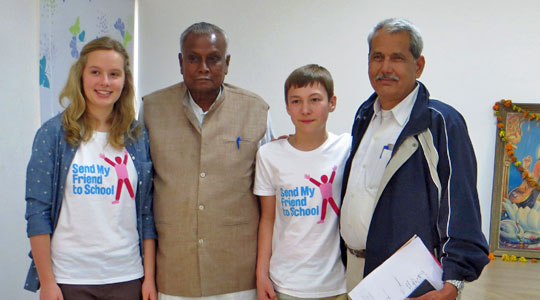

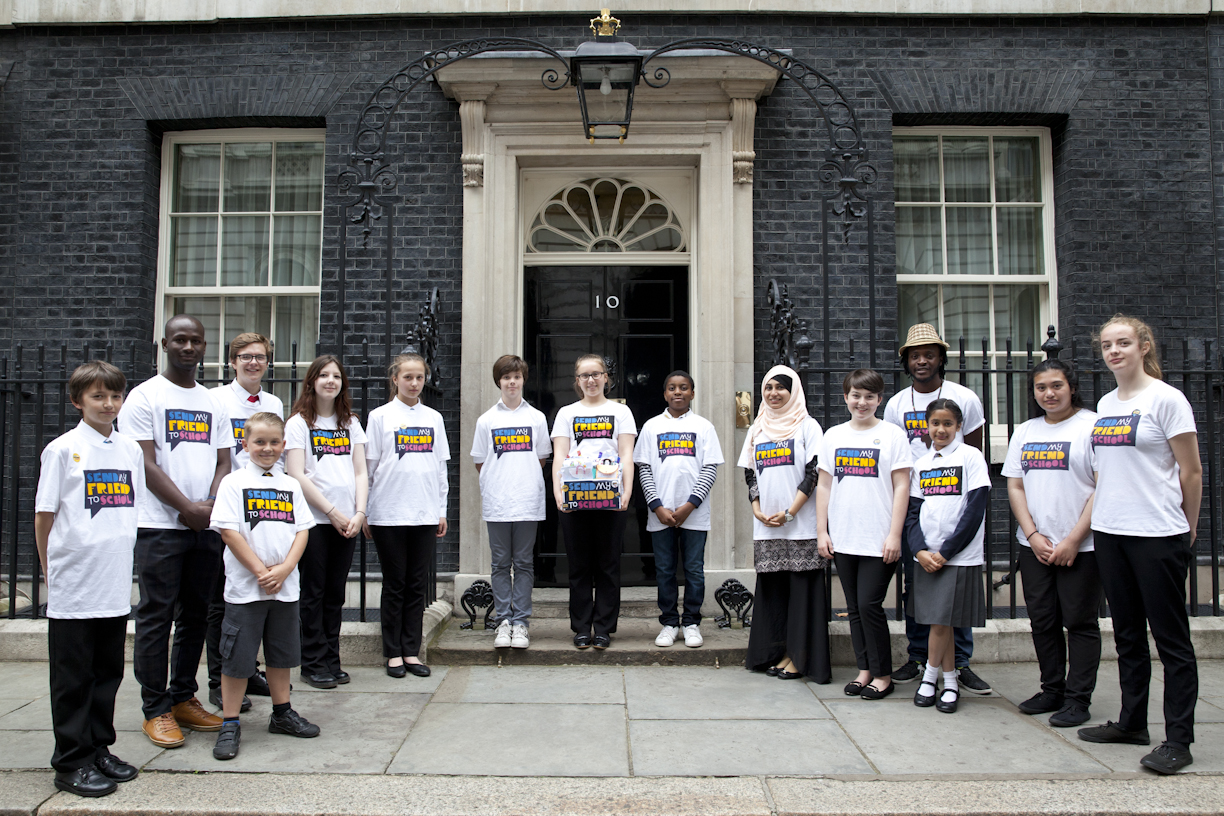
 Send My Friend to School brings together thousands of children across the UK to speak up for the right to education.
Send My Friend to School brings together thousands of children across the UK to speak up for the right to education.